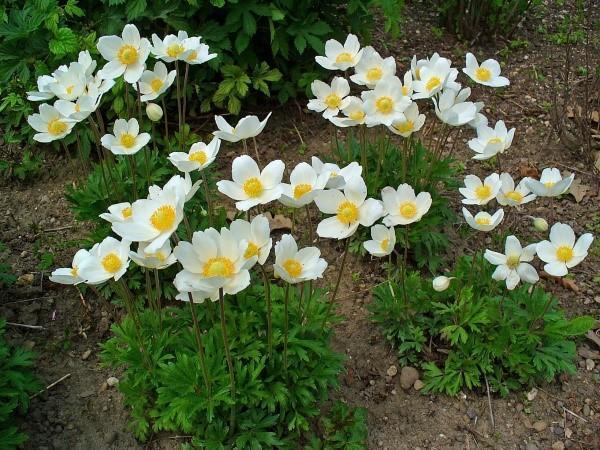Anemones: features of growing beautiful and delicate perennials
 Almost all gardeners know and love anemones with their delicate foliage and delicate chamomile inflorescences. And there is a reason: they are not only beautiful, but also absolutely not capricious. All they need is a suitable place and comfortable environment. After giving the flowers a little attention, you can then admire them for a long time. Today we will tell you how to grow such beauties in your garden, and what they are.
Almost all gardeners know and love anemones with their delicate foliage and delicate chamomile inflorescences. And there is a reason: they are not only beautiful, but also absolutely not capricious. All they need is a suitable place and comfortable environment. After giving the flowers a little attention, you can then admire them for a long time. Today we will tell you how to grow such beauties in your garden, and what they are.
Plant classification
There are many varieties of anemone. They can be divided into two large groups:
- Rhizome. More related to the forest variety.
- Tuberous. In addition to the structure of the root system, they also differ in a more diverse color.
How and where to plant anemones?
Most often, anemones are propagated in a vegetative way: by dividing the rhizomes or by kidney tubers. The seed method also exists, but is rarely used. Only freshly harvested seeds should be used for sowing. However, their germination rate does not exceed 25%.
For anemone, you need to take a semi-shaded place in the garden. They will not bloom in full shade. It is also important that water does not stagnate in this area, otherwise the plant will disappear. Flowers love the soil nutritious and loose. It is also good to mulch the bushes with at least fallen leaves and grass.
Particular attention should be paid to planting tuberous anemones. When buying, the nodules look rather unattractive: they are shriveled and dried up. You cannot plant them in this form, first you need to "wake up" the anemone.
Recommendation! It is necessary that the tubers wake up from hibernation, and growth processes begin in them. To do this, they should be soaked in warm water for a couple of hours.
Planting anemones should not be deep, a maximum of 7 cm deep.
Anemones: features of watering, feeding and wintering
Anemones are gentle plants and, above all, it concerns watering. Moisture is vital for them, so it is necessary to water the bushes often. At the same time, it is necessary to ensure that the soil dries out slightly between waterings. In a swamp, tubers and roots will rot.
Fertilize anemones only during flowering. For feeding, it is better to use mineral complexes... But you need to be careful with the dosage - excess fertilizer is harmful to flowers.
Most anemones are hardy enough. In regions with moderately cold winters, they can hibernate in a flowerbed in the garden if there is shelter. In the fall, add another layer of mulch under the bushes, and cover with spruce branches on top. Then the anemones overwinter without losses.